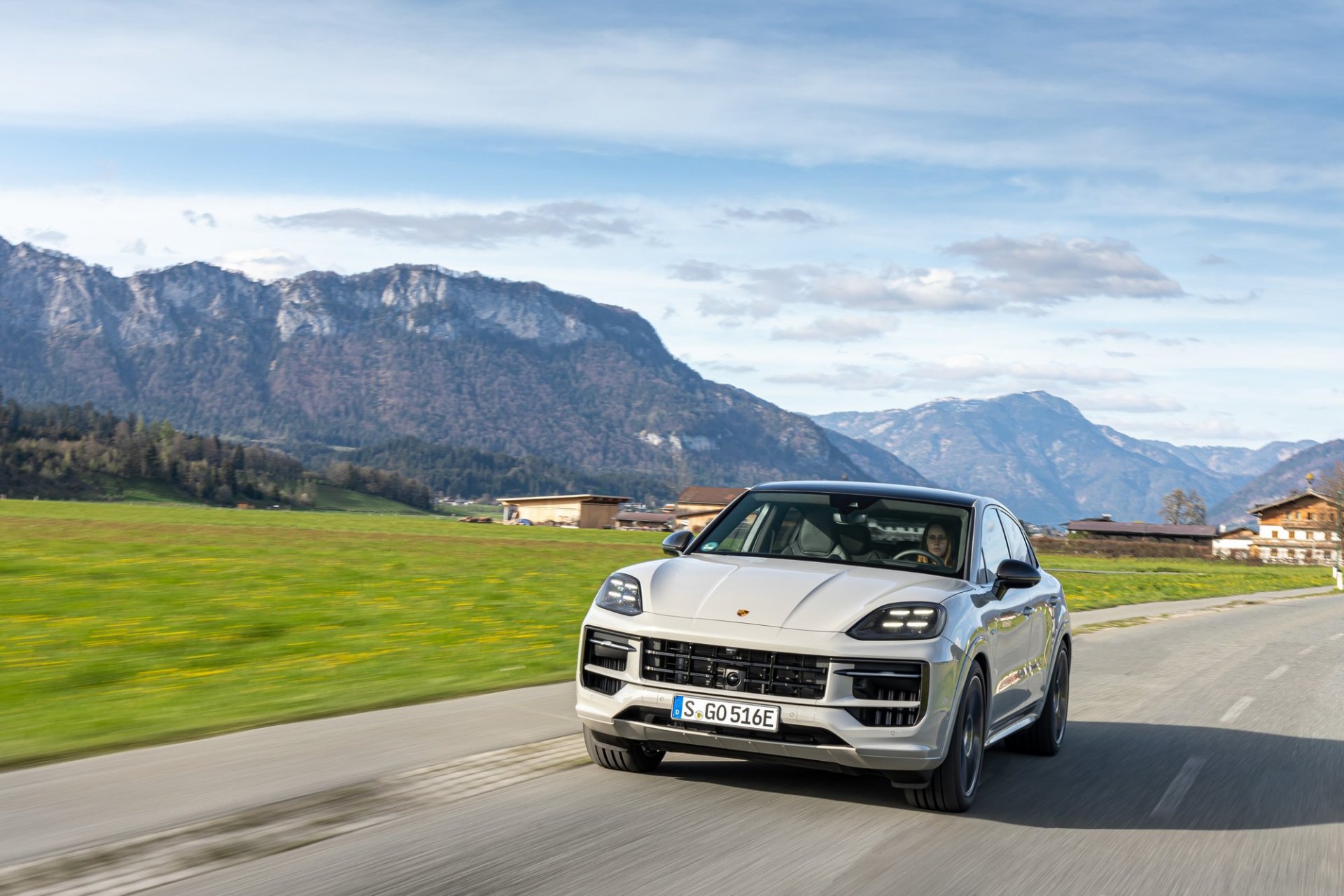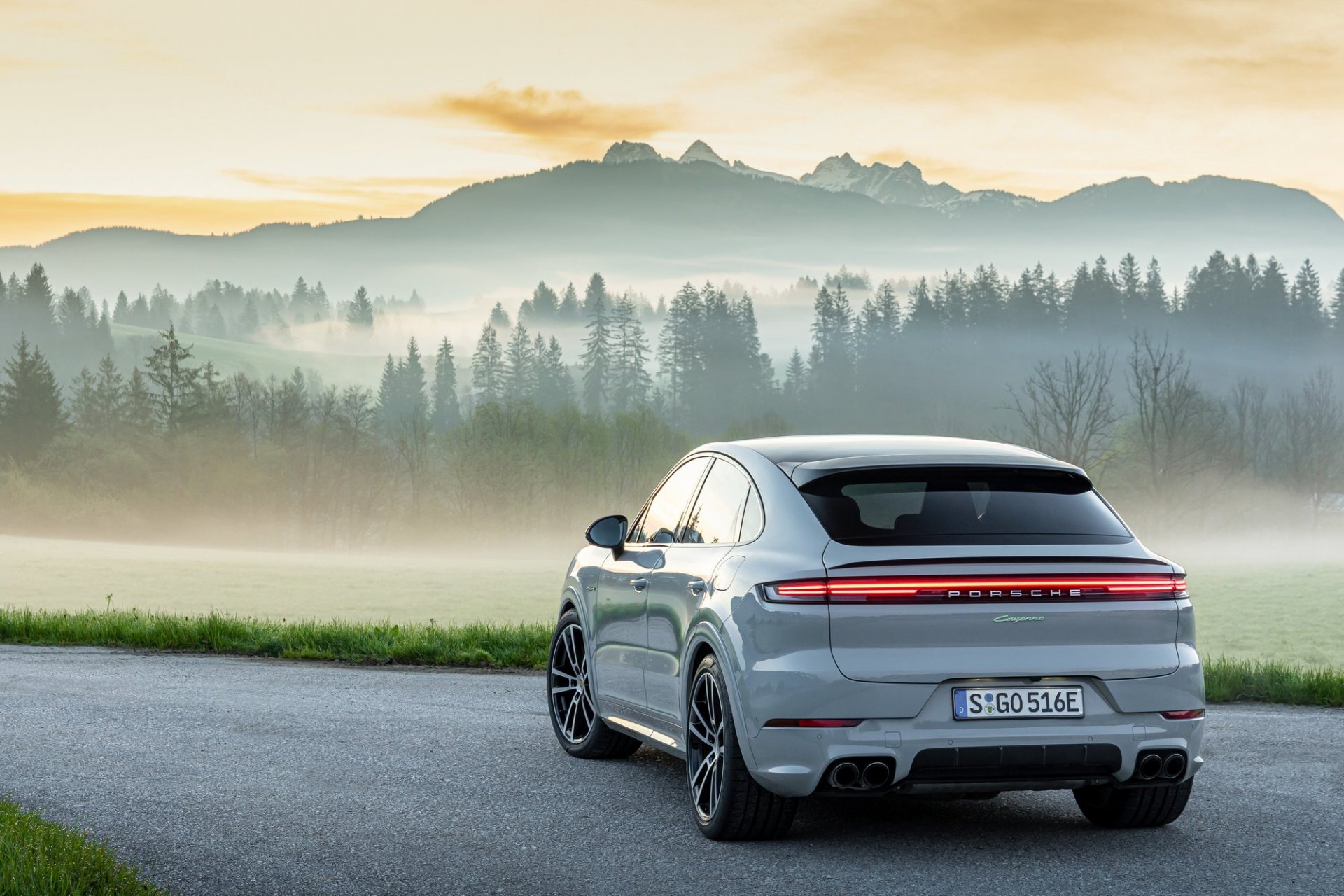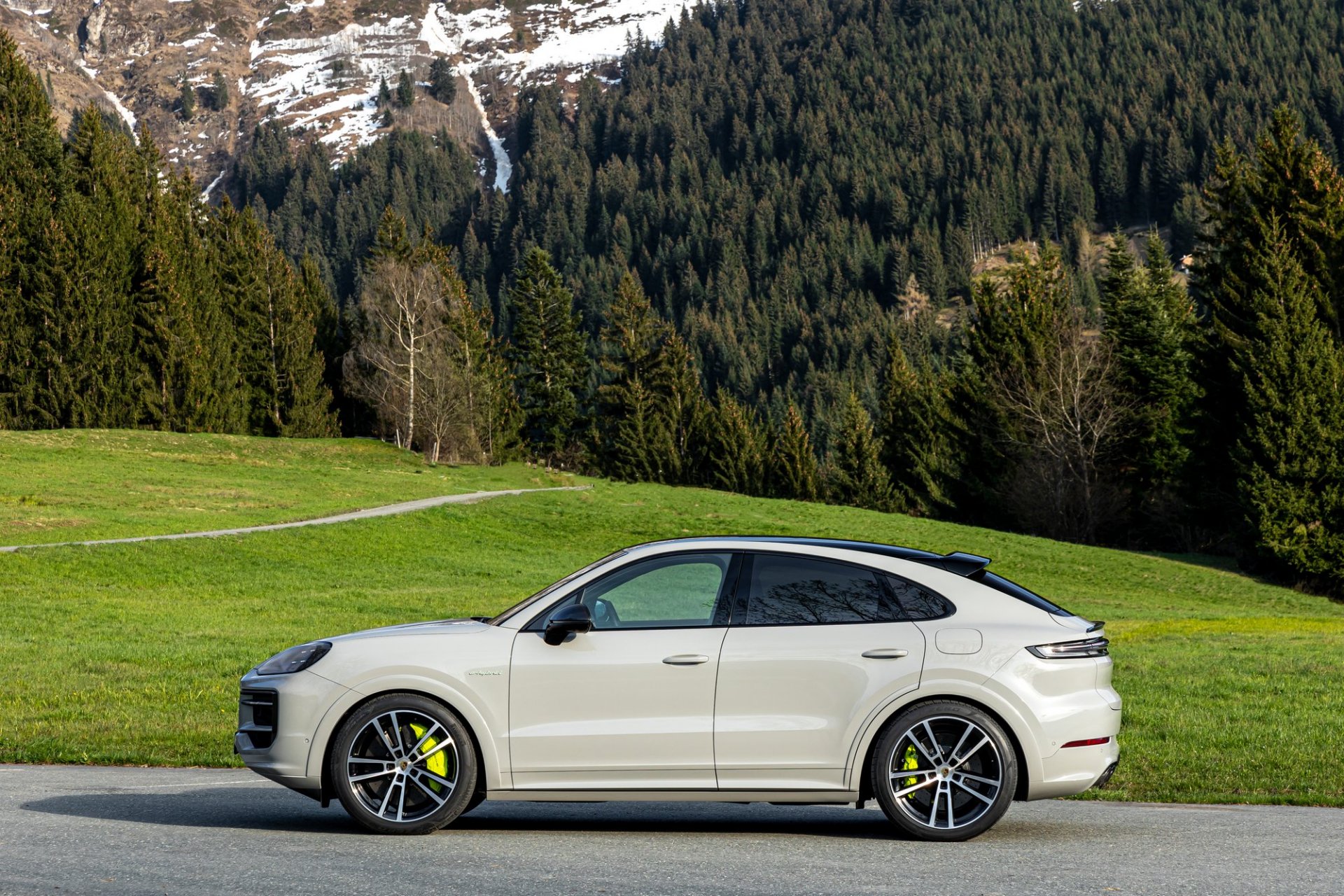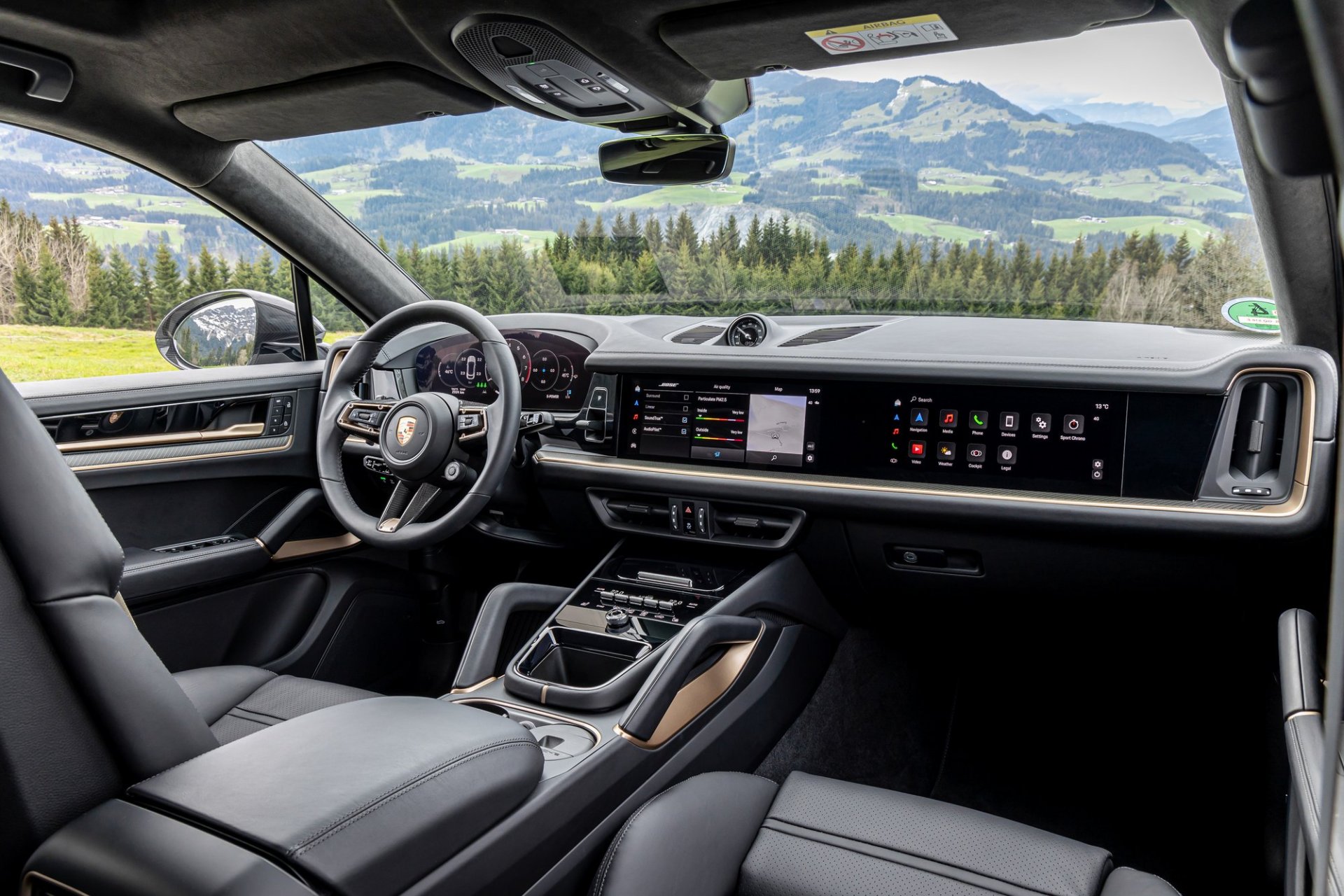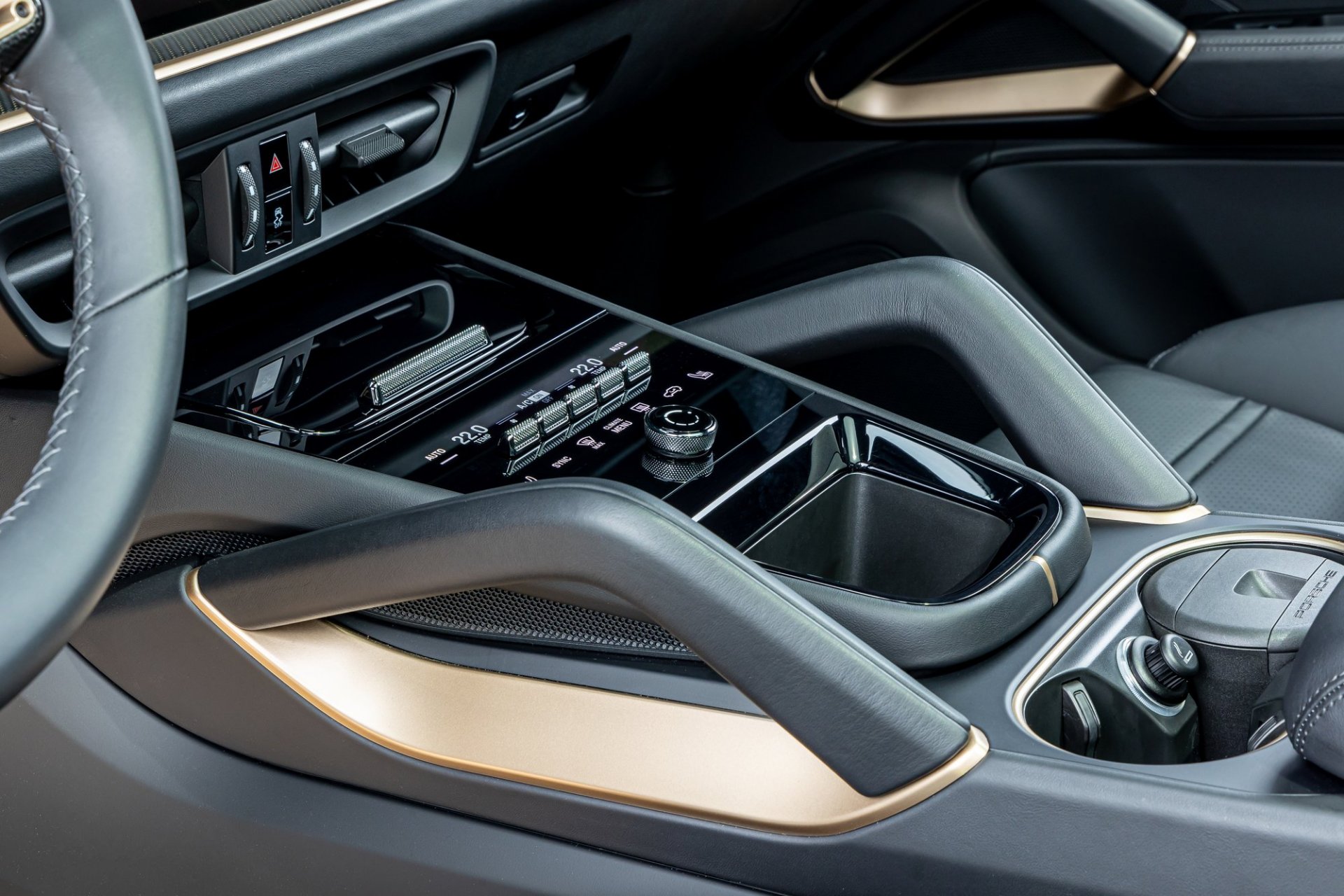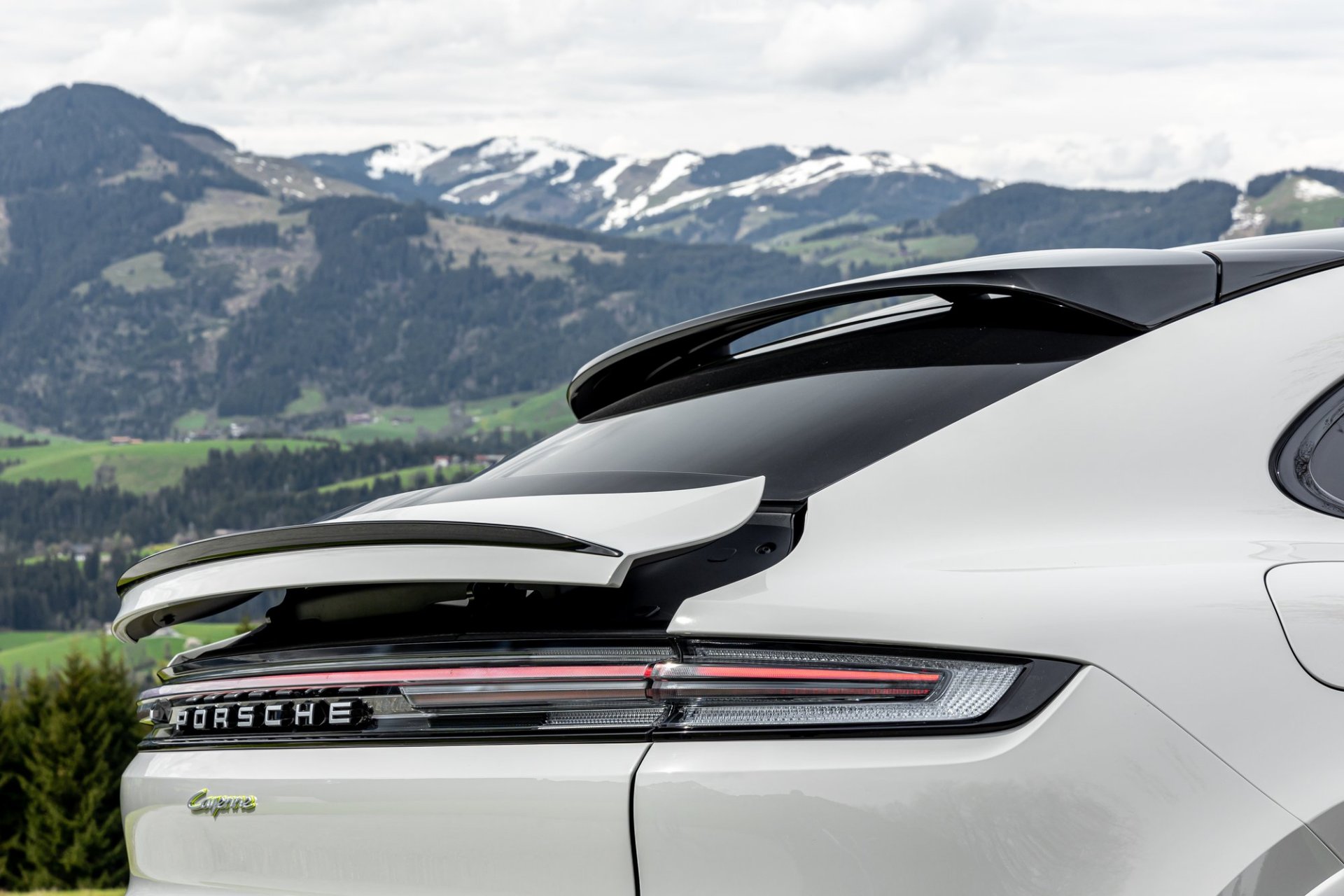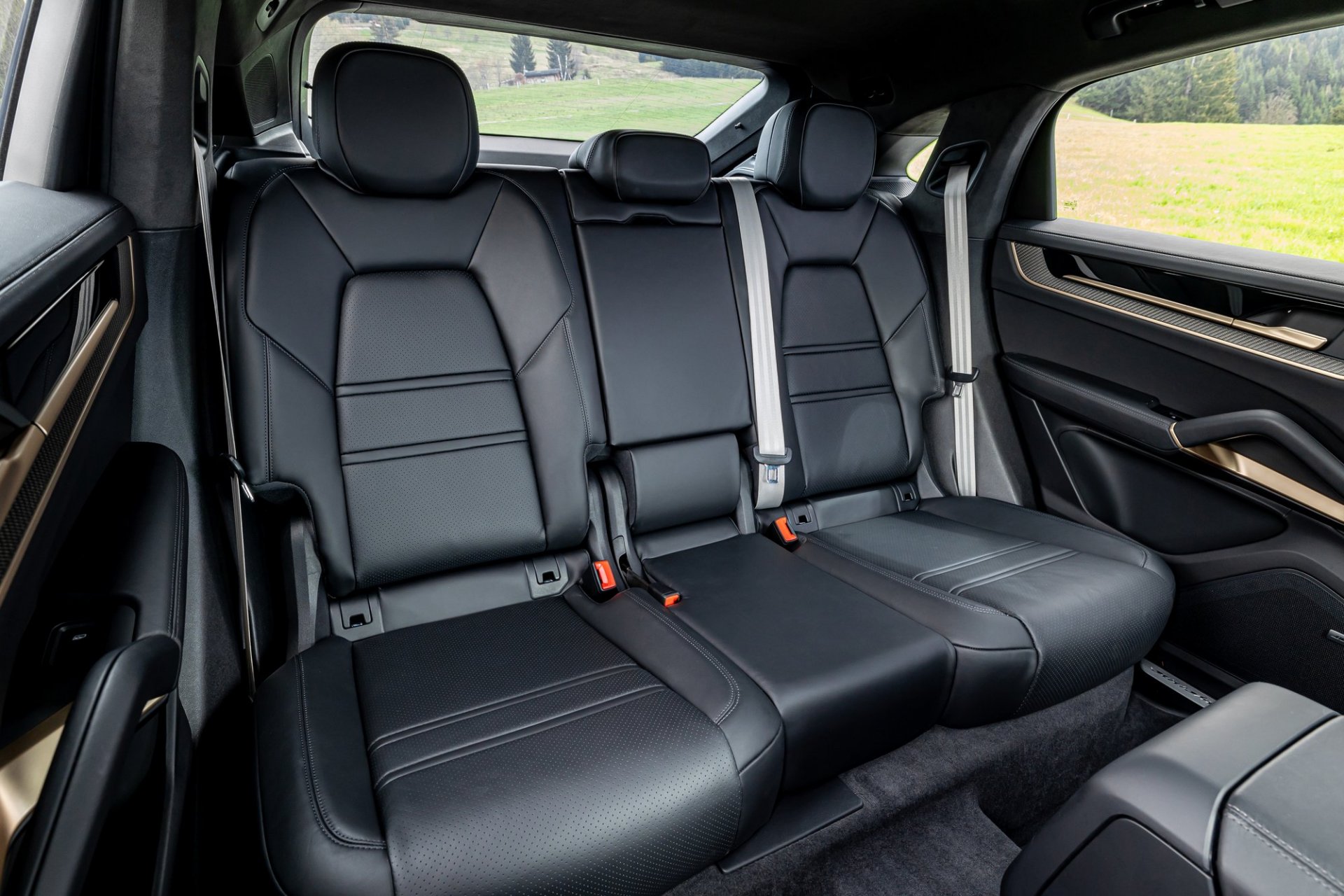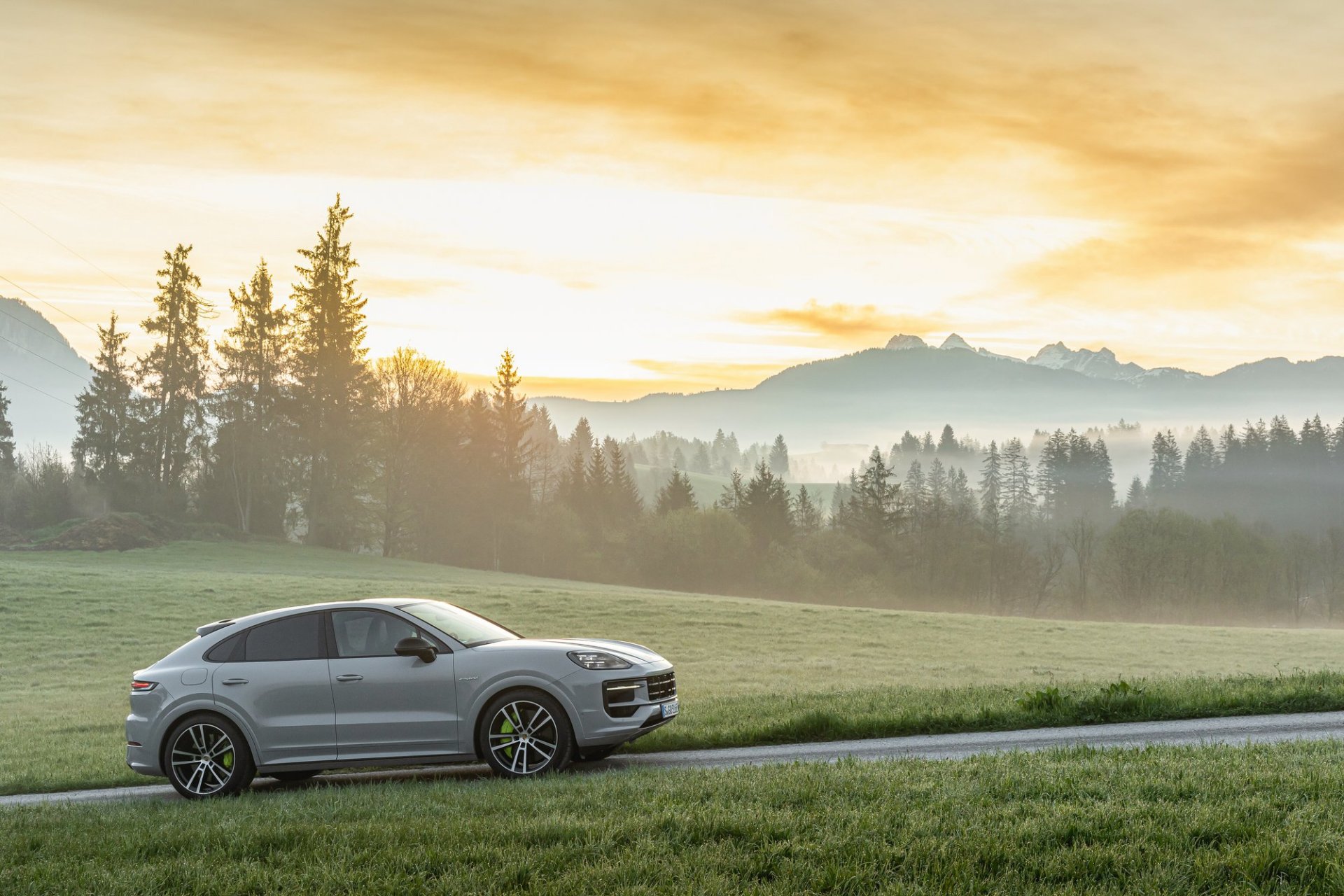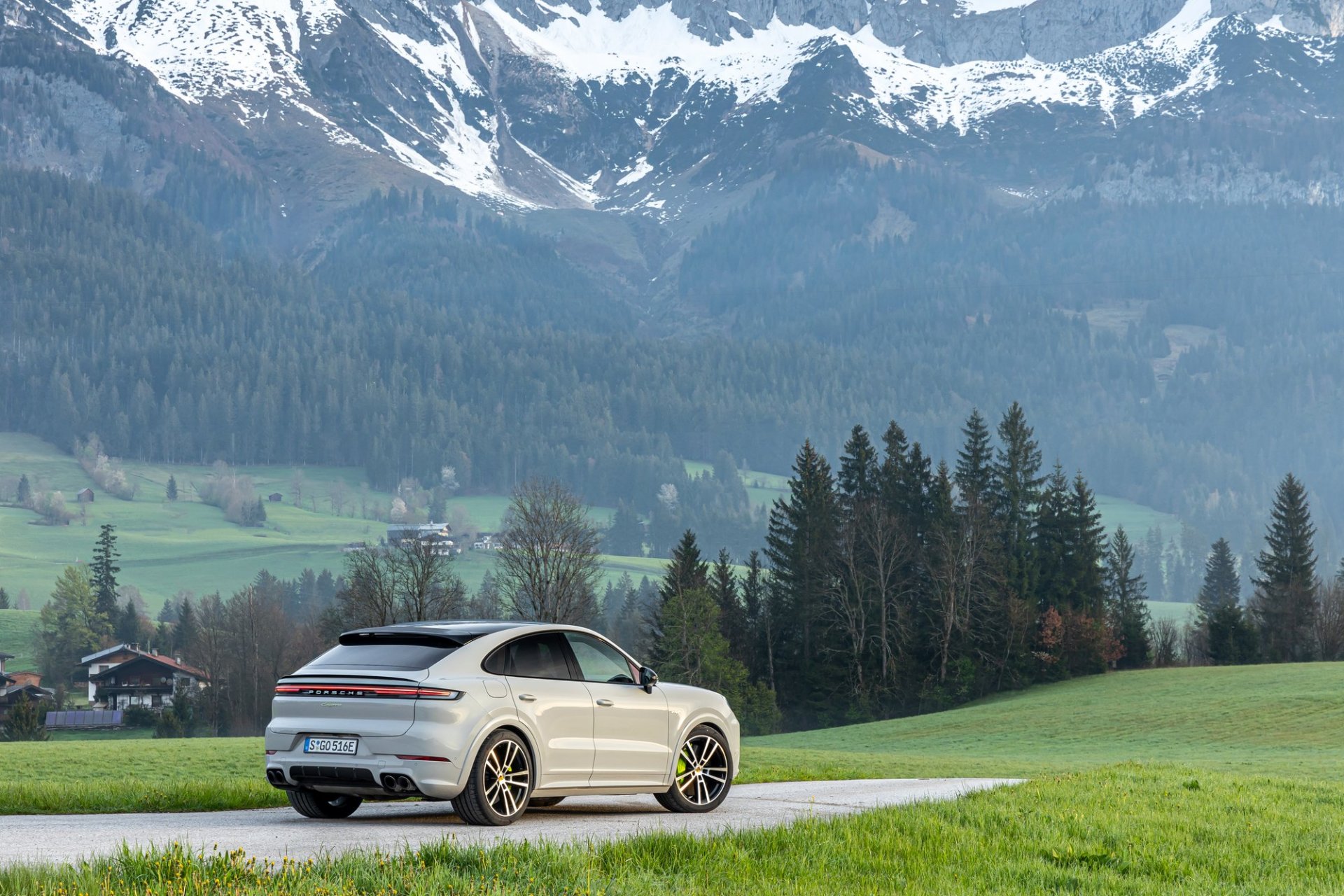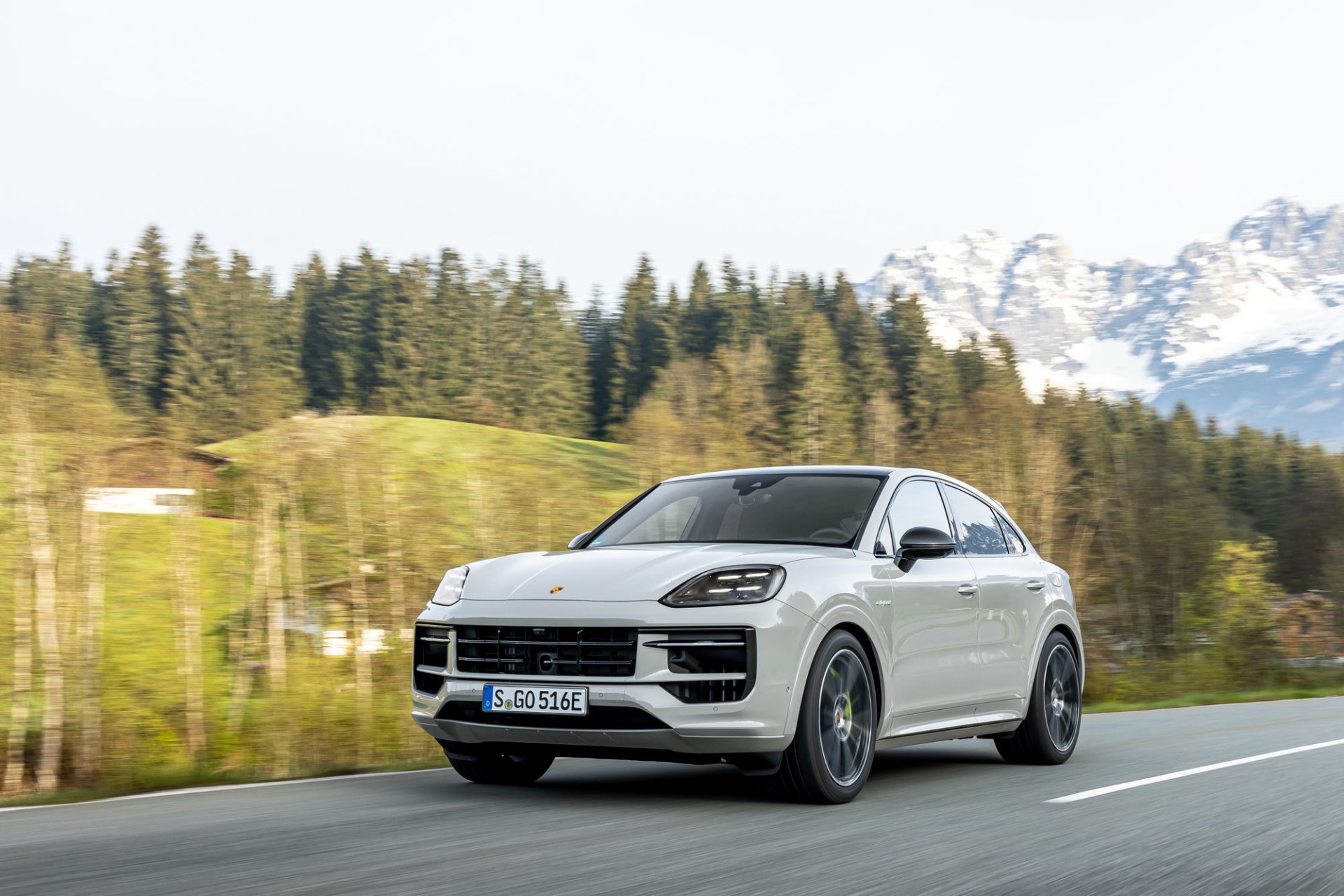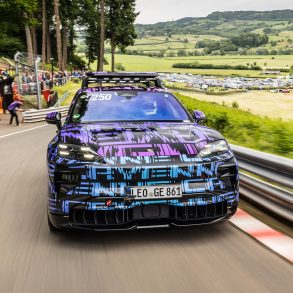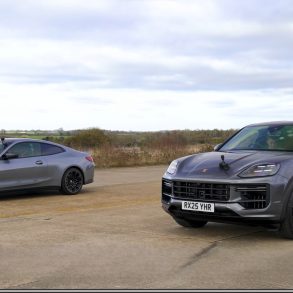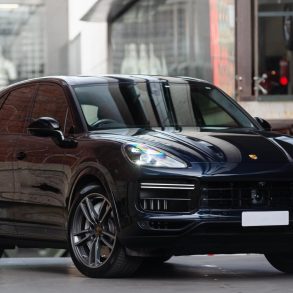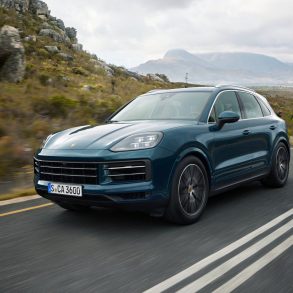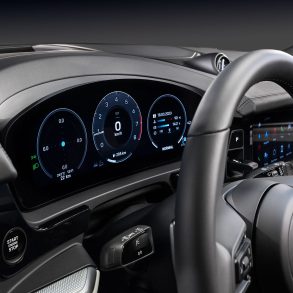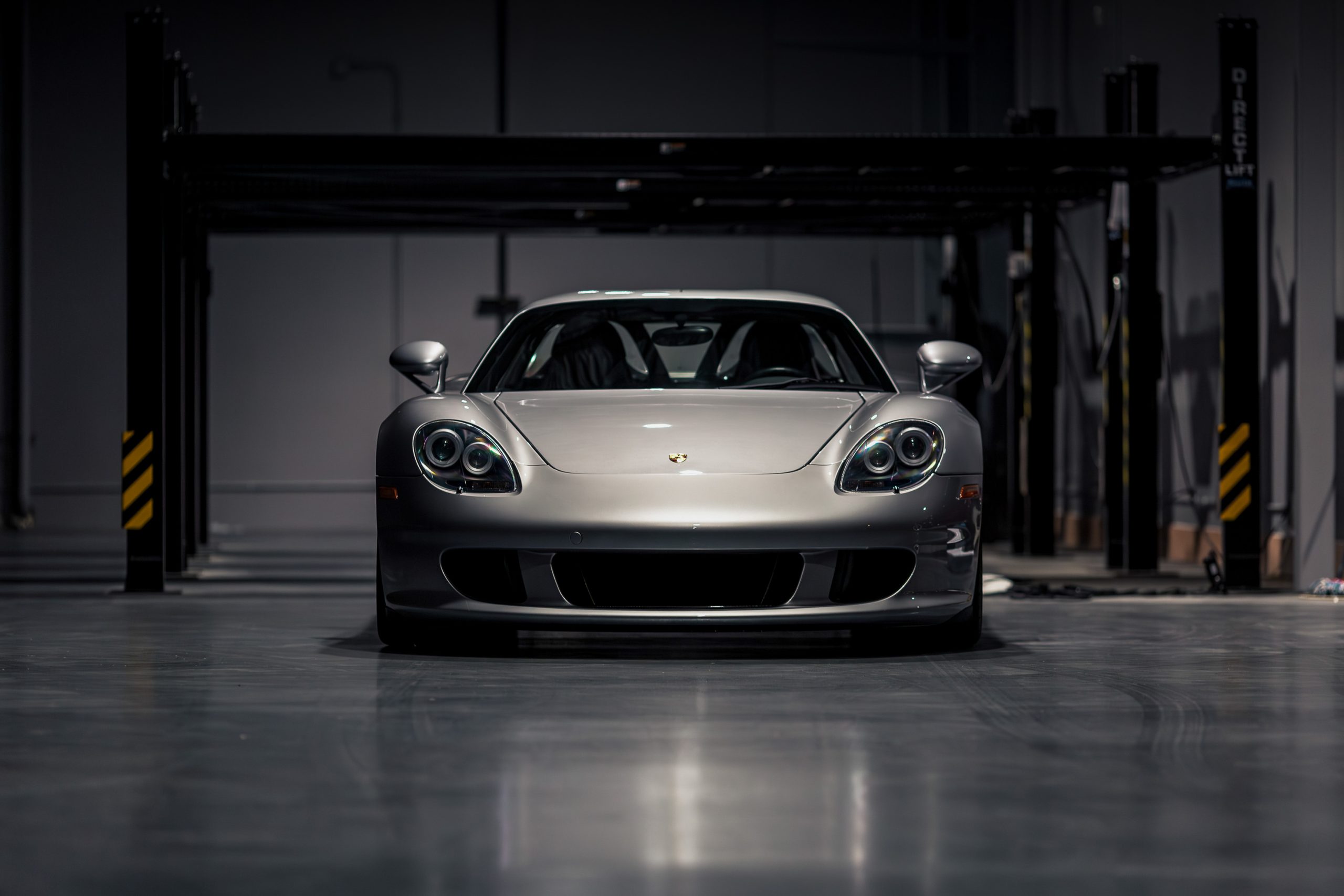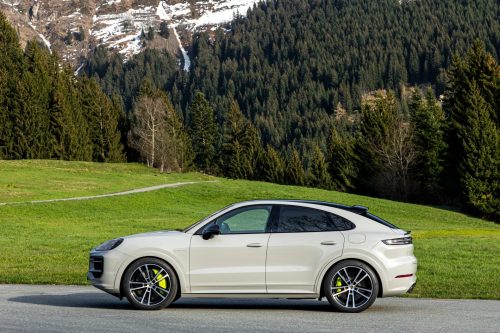
Current Porsche Cayenne E-Hybrid Coupe – Ultimate Guide
For 2024, the Porsche Cayenne E-Hybrid Coupe shares its upgraded hybrid powertrain with the SUV variant but packages it in a sleeker, more style-focused body. While the drivetrain and tech updates mirror what you’ll find in the standard Cayenne E-Hybrid, the Coupe aims to bring a bit more flair to the experience at the slight expense of practicality.
Under the hood, the Coupe carries over the same 3.0-liter turbocharged V6 paired with a newly updated electric motor. Combined, the system makes 463 horsepower and 479 lb-ft of torque, which is plenty to get this roughly 5,300-pound SUV up to speed with authority. The upgraded electric motor now puts out 174 horsepower on its own (up from 134), while the V6 contributes 300 horsepower. Porsche has also increased the battery capacity to 25.9 kWh, up from 17.9 kWh in the previous model.
That bigger battery doesn’t just help with total power output; it meaningfully improves all-electric driving range. While EPA figures aren’t yet finalized, estimates suggest up to 30 miles of EV range is now possible in everyday use. Porsche also upgraded the onboard charger, which now supports 11 kW AC charging. That means a full recharge can be done in about 2 hours and 40 minutes with a compatible Level 2 setup, much quicker than before.
The key difference between the Coupe and the SUV is, of course, the body. The sloping roofline gives the Coupe a sportier silhouette, a more aggressive stance, and a distinct look from the side and rear. It’s a more style-conscious choice, meant to appeal to those who want Porsche performance with a little less utility and a little more flair. The trade-off is reduced rear headroom and cargo space. There’s still usable luggage room, and the rear seats fold flat, but if maximum cargo volume is a priority, the SUV may be the better fit.
Both versions ride on the same platform and feature the same standard Porsche Active Suspension Management (PASM) system, which uses adaptive dampers to adjust ride comfort and handling in real time. Optional air suspension with new two-chamber technology provides even more range between soft and firm ride modes. Rear-axle steering is available too, making the Coupe surprisingly maneuverable in tight spaces and more composed at speed.
Regenerative braking has also been improved. The E-Hybrid Coupe now blends regenerative and mechanical braking more seamlessly thanks to a new brake booster system. This allows for smoother stops and a consistent brake pedal feel, whether you’re easing to a red light or driving more aggressively on a twisty road.
Inside, the Coupe gets the same cabin redesign as the rest of the Cayenne lineup. That includes a new curved 12.7-inch instrument display and a 12.3-inch central touchscreen. The optional 10.9-inch passenger screen is also available, letting front passengers control media or watch video content on the go. The center console now features a simplified layout, with a dashboard-mounted gear selector and physical climate toggles. It’s a clean, modern design, but not so minimalist that it sacrifices usability.
One standout feature is the standard mode selector dial on the steering wheel, something previously limited to Cayennes equipped with the Sport Chrono package. This makes it easier to switch between driving modes like Hybrid Auto, EV, E-Charge, Sport, and Sport Plus without taking your hands off the wheel.
In Hybrid Auto mode, the vehicle uses GPS and traffic data to optimize when and how it uses the electric motor versus the gas engine. Around town, the Coupe can stay in EV mode more frequently, saving gas. In Sport and Sport Plus modes, the car uses the battery for boost, holding a reserve charge to ensure strong acceleration when needed.
The Coupe also offers a long list of options and tech. Features like ventilated and massaging seats, a panoramic glass roof, ambient lighting, and upgraded leather or Race-Tex interiors let you tailor the feel of the cabin. On the tech side, wireless Apple CarPlay and Android Auto are standard, as is a cooled wireless charging pad for smartphones.
When it comes to safety, the Coupe doesn’t skimp. You get forward collision warning, lane departure warning, front and rear parking sensors, and a 360-degree camera system. Add-on options include adaptive cruise control, lane-keep assist, and a head-up display. A night vision system is also available, enhancing nighttime driving confidence.
Pricing hasn’t been finalized at the time of writing, but it’s safe to expect the Coupe to carry a small premium over the SUV, as it has in previous years. That premium buys you exclusivity and design, not additional performance, but for some buyers, that’s exactly the point.
The 2024 Porsche Cayenne E-Hybrid Coupe takes everything that makes the standard E-Hybrid a compelling plug-in SUV and packages it in a body with a bit more presence. It’s not as cargo-friendly, and it’s not meant to be, but for buyers who want performance, efficiency, and head-turning looks in one package, the Coupe hits the mark.
Pictures
Reviews & Videos
Press Release
Greater range, faster charging, more power
The E-Hybrid models of the Cayenne combine performance and efficiency in innovative ways. It’s truer than ever before: comprehensively revamped powertrains enable greater range, higher system output and shorter charging times.
The heart of the hybrid system in all E-Hybrid () is a new electric motor. A coil with an optimised number of turns as well as a new magnet and an increased phase current of the pulse inverter boost the electric power by 30 kW to 130 kW (176 PS). An additional 50 Nm takes the torque up to 450 Nm. Moreover, the new electric motor can convert 30 per cent more braking power into electrical energy in generator mode and store it in the traction battery: The new Cayenne E-Hybrids now recuperate with a capacity of up to 88 kW and at speeds down to 2 km/h. The predecessor braked down to a speed of 14 km/h with the electric motor. The compact unit is integrated in the revamped eight-speed automatic transmission.
A new brake booster further refines the driving experience in all E-Hybrid models. The Cayenne uses the technology to make the transition between the recuperation brake and the friction brake particularly smooth. This results in a consistent pedal feel throughout the braking process and thus to optimal dosing of braking power in both everyday and dynamic driving situations.
Porsche is also equipping all new Cayenne E-Hybrid models with a larger high-voltage battery, with an 8 kWh capacity increase to 25.9 kWh all told. Compared to predecessor models, it thus enables significantly more all-electric trips. With the new 11 kW on-board charger, the charging time at a suitable wall charger or charging station is just two hours and 40 minutes despite the increase in battery capacity.
The driving modes of the new Cayenne are designed to use the available energy as intelligently and efficiently as possible. In the Sport driving programme, the minimum charge level of the traction battery drops from 30 to 20 per cent, and in the Sport Plus driving programme from 80 to 30 per cent. This means the internal combustion engine needs to recharge the battery less frequently, which improves the overall efficiency of the vehicle. Another new feature are the charging strategies in the E-Charge driving programme: When driving in built-up areas and at speeds of less than 55 km/h, the drive system operates in hybrid mode. The combustion engine and the electric motor share the workload and the charge level stays constant. Outside of town and at higher speeds, the internal combustion engine takes over completely and charges the battery to a maximum charge level of 80 per cent. The revised Hybrid-Auto mode includes environmental and navigation data in the powertrain strategy and enables a higher proportion of the route to be driven on electric power alone in city driving.
Cayenne S E-Hybrid
The Cayenne S E-Hybrid Cayenne S E-Hybrid (preliminary values): Fuel consumption* combined (WLTP) 4.6 – 4.0 l/100 km, Fuel consumption with depleted battery combined 10.7 – 9.9 l/100 km, Electric power consumption* combined (WLTP) 20.0 – 19.1 kWh/100 km, CO₂ emissions* combined (WLTP) 103 – 90 g/km, CO₂ class B , CO₂ class weighted combined B , CO₂ class with depleted battery G combines the dynamic demands of the Cayenne S with the progressive drive concept of the Cayenne E-Hybrid. In terms of the performance-relevant aspects of powertrain and suspension, Porsche is positioning the new Cayenne S E-Hybrid above the Cayenne S and Cayenne E-Hybrid. In doing so, the sports car manufacturer is creating yet another exhilarating point of access to efficient and advanced hybrid technology.
With 260 kW (353 PS), the three-litre V6 turbo engine in the Cayenne S E-Hybrid has 36 kW (49 PS) more power than the V6 in the Cayenne E-Hybrid. Together with the new electric motor, this results in a system output of 382 kW (519 PS). The SUV and SUV Coupé accelerate from zero to 100 km/h in 4.7 seconds and reach a top speed of 263 km/h. The electric range is up to 90 km (EAER City).
Cayenne Turbo E-Hybrid
The Cayenne Turbo E-Hybrid Cayenne Turbo E-Hybrid SUV (preliminary values): Fuel consumption* combined (WLTP) 5.3 – 4.8 l/100 km, Fuel consumption with depleted battery combined 11.9 – 11.2 l/100 km, Electric power consumption* combined (WLTP) 20.5 – 20.0 kWh/100 km, CO₂ emissions* combined (WLTP) 120 – 107 g/km, CO₂ class B , CO₂ class weighted combined B , CO₂ class with depleted battery G assumes the mantle of the previous Cayenne Turbo S E-Hybrid as the most powerful model in the portfolio. Both body styles combine superior drive performance with high efficiency. The revised hybrid technology in the new Cayenne supports both the day-to-day usability and the dynamic qualities of the top Cayenne.
The new electric motor works in conjunction with a powerful four-litre V8 twin-turbo engine in the Cayenne Turbo E-Hybrid. The combustion engine alone has an output of 441 kW (599 PS). Together, the two power units deliver an impressive combined power output of 544 kW (739 PS) and a maximum torque of 950 Nm. This amounts to a power boost of 43 kW (59 PS) over the previously offered Cayenne Turbo S E-Hybrid. The performance of the Cayenne Turbo E-Hybrid amply justifies its billing as the top of the line in the sports car of SUVs. With Launch Control, it crushes the sprint from 0 to 100 km/h in just 3.7 seconds and reaches a top speed of 295 km/h.
The eight-cylinder twin-turbo has been extensively revised for use in the new Cayenne to reduce fuel consumption and emissions. The switch from a twin-scroll to a single-scroll turbocharger results in higher exhaust-gas temperatures, which reduces fuel consumption in the highly dynamic range. Increased fuel injection pressure to 350 bar improves efficiency, while electrically controlled wastegates boost engine responsiveness. A new two-stage variable valve lift with two cam profiles per valve on the intake camshaft adjusts the valve train depending on the load condition. At low loads, the engine works with short valve opening times and small valve lift, at high power requirements with long opening times and large lift. The fully variable camshaft control Vario Cam Plus also varies the duration of the valve overlap. This improves performance while further reducing CO₂ emissions. Optimisations to the piston rings and piston cooling also promote the robustness of the powerful eight-cylinder engine.



